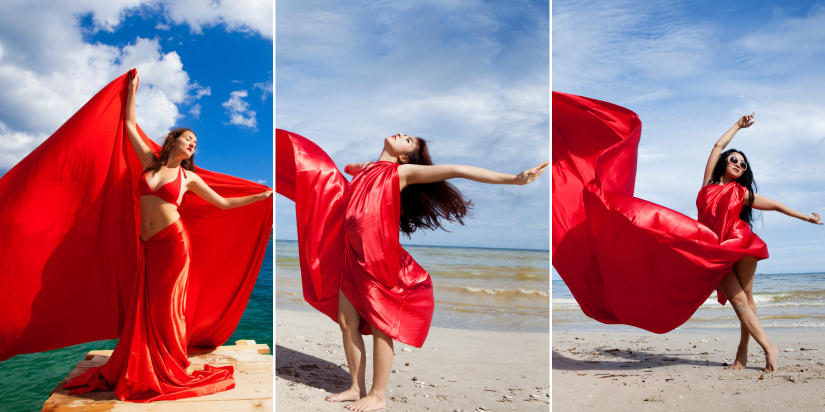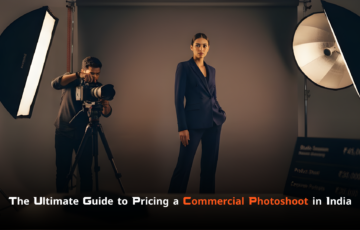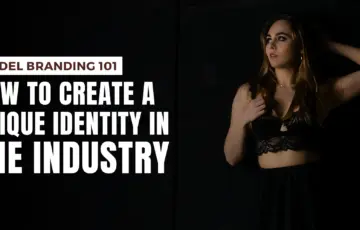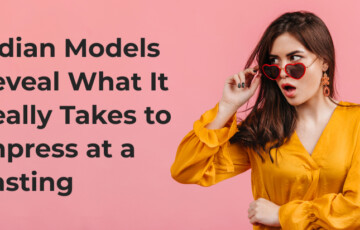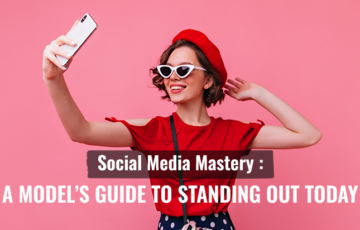Picture a photograph that stops you in your tracks. It’s not just a person wearing clothes; it’s a moment brimming with life. The model seems entirely at ease, their expression is genuine, and the fabric of their garment has a beautiful, natural drape that suggests movement. It feels less like a pose and more like a still from a feature film. How is this captivating, effortless quality achieved? It’s not luck—it’s a sophisticated technique known as flow posing.
Flow posing represents a pivotal shift in the world of modeling and photography. It moves beyond the traditional, rigid method of holding static poses and instead embraces the art of continuous movement. This dynamic approach is about finding the beautiful, unguarded moments that exist between poses, resulting in images that are authentic, energetic, and deeply engaging. For creative professionals looking to elevate their work and stand out on platforms like Dazzlerr, mastering flow posing is no longer optional; it’s essential for creating modern, high-impact imagery. This guide will serve as your deep dive into the philosophy, techniques, and transformative power of this vital posing method.
What Exactly is Flow Posing?
At its heart, flow posing is the practice of moving smoothly and continuously through a series of poses without hard stops. Instead of thinking of each pose as a final destination, the model and photographer work together to capture the beautiful, authentic moments that happen in between. It is a dance between the model, the wardrobe, the environment, and the camera.
Beyond the Static: A Shift in Posing Philosophy
Traditional posing focuses on achieving a specific, pre-determined shape. The instructions are often static: “Put your hand on your hip,” “Turn your head to the left,” “Hold it.” Flow posing, however, uses action-oriented prompts. The philosophy shifts from “being” a pose to “becoming” through movement. It’s the difference between a still photograph of a dancer and a photograph that captures the very essence of the dance itself. This approach liberates the model from the pressure of perfection in a single pose, allowing for more natural poses and authentic expressions to emerge.
The Core Elements of Flow Posing
- Continuous Movement: This is the most critical element. The model is encouraged never to be completely still. Movements can be slow and subtle or fast and energetic, but the key is that they are ongoing. This constant motion provides the photographer with an endless stream of unique frames to capture.
- Authenticity and Emotion: By focusing on movement rather than a static shape, models often feel less self-conscious and more in tune with their bodies. This leads to more genuine smiles, laughter, and contemplative expressions—the kind of raw emotion that connects with an audience.
- Rhythm and Cadence: Every model has a natural rhythm. Flow posing encourages finding that personal tempo. Some may move to the beat of background music, while others see an internal rhythm. This cadence makes the fluid movements feel personal and unforced.
- Interaction with Wardrobe and Environment: A key part of this posing technique involves using the world around you. This means interacting with clothing—letting the fabric of a dress fly, flipping the collar of a jacket, or running hands through a scarf. It also means engaging with the environment, such as leaning against a wall, walking up a flight of stairs, or interacting with a prop.
Why Flow Posing is a Game-Changer in Modern Photography
For Models: Unlocking Confidence and Authenticity
For many models, especially those new to the industry, holding a static pose can feel awkward and unnatural. Flow posing removes this pressure. By providing a framework for continuous movement, it helps models get out of their heads and into their bodies. This leads to a significant boost in confidence, which translates directly into the photos. The resulting model portfolio is more dynamic, showcases a wider range of expressions, and highlights an ability to convey emotion and movement, highly sought-after skills in fashion photography.
For Photographers: Capturing Life and Story
Photographers often find that flow posing breaks them out of creative ruts. Instead of directing the same few poses for every shoot, they become observers and curators of beautiful moments. This technique yields a much higher number of unique and usable shots per session. The “in-between” moments, which are often the most magical, are no longer missed. The final images tell a richer story, capturing a personality and a mood rather than just a person in an outfit. This is a crucial skill for high-level fashion photography.
For Brands and Publications: Connecting with the Modern Audience
Today’s consumers are drawn to authenticity. They want to see imagery that feels real and relatable. Brands that use dynamic poses and fluid movements in their campaigns are better able to connect with this desire. When a garment is photographed in motion, customers get a better sense of the fabric, the fit, and how it would feel to wear it in real life. Platforms like Dazzlerr recognize this shift, prioritizing talent who can deliver this modern, engaging aesthetic that resonates with forward-thinking clients.
Mastering the Art: A Practical Guide to Flow Posing Techniques
Understanding the theory is one thing; putting it into practice is another. Here are actionable photoshoot tips and techniques for both models and photographers to master the art of flow posing.
Essential Posing Techniques for Models
- The Foundational Walk: Simply walking towards, away from, or past the camera is the basis of many dynamic poses. Vary your pace, add a turn, look over your shoulder, or let your arms swing naturally.
- Hand and Arm Articulation: Avoid stiff hands. Keep them soft and in motion. Gently touch your face, run your fingers through your hair, adjust a piece of jewelry, or let them trace the lines of your clothing.
- Engage with Your Wardrobe: Your clothing is your primary prop. If you’re wearing a dress, spin to let the skirt fly out. If you have a jacket, try putting it on, taking it off, or slinging it over your shoulder. These actions create natural poses and highlight the garment.
- The Figure-Eight Motion: To avoid looking stiff, introduce subtle, continuous movement in your torso and hips, almost like you are tracing a figure-eight. This creates graceful, S-shaped curves in the body.
- Breathing as a Tool: Your breath is a powerful tool for subtle movement. A deep inhale can lift the chest and shoulders, while a slow exhale can create a relaxed, contemplative look. Use your breath to initiate small shifts in your posture.
- Emotional Transitions: Practice moving through a sequence of expressions. Transition smoothly from a soft smile to a neutral expression to a hearty laugh. This provides the photographer with a range of authentic emotions to capture.
A Photographer’s Guide to Directing Flow Posing
- Create a Relaxed Atmosphere: Flow posing thrives on comfort and trust. Play music that matches the mood of the shoot, maintain a positive and encouraging conversation, and build a rapport with the model.
- Use Action-Oriented Prompts: Instead of static commands, use prompts that inspire movement. Try phrases like:
“Walk towards me as if you’re late for a meeting.”
“Lean against that wall and slowly look up at the sky.”
“Imagine a cool breeze is hitting you; let your hair and clothes react.”
“Show me how that dress moves when you spin.” - Optimize Your Camera Settings: To freeze the fluid movements and capture sharp, dynamic poses, you need the right settings. Use a fast shutter speed (typically 1/500s or faster) and shoot in continuous burst mode. This ensures you won’t miss the perfect “in-between” moment.
- Observe and Anticipate: Your job is to be an active observer. Watch the model’s rhythm and anticipate their next move. Be ready to press the shutter not just at the peak of a pose, but during the transitions as well. This is where the magic of flow posing lives.
Preparing for a Flow Posing Photoshoot
Pre-Shoot Preparation for Models
- Practice at Home: Spend time in front of a mirror, moving through different sequences. See how your body and clothes look in motion. This will build muscle memory.
- Curate a Playlist: Create a music playlist that helps you get into a state of flow. The right music can be a powerful tool for inspiring fluid movements.
- Warm-Up: Just like an athlete, a model should warm up before a shoot. Simple stretches can loosen your muscles and make your movements more graceful and less prone to stiffness.
Pre-Shoot Planning for Photographers
- Communicate the Concept: Have a clear conversation with the model about the mood and goals of the shoot. When they understand the vision, they can better tailor their movements to it.
- Scout a Suitable Location: Choose a location that provides enough space for the model to move freely. A cramped space will stifle the very essence of flow posing.
- Prepare Your Gear: Ensure you have fully charged batteries and empty, fast memory cards. A flow posing session generates a lot of photos, and you don’t want to be stopped by technical issues.
Common Misconceptions and How to Avoid Them
Myth 1: “It’s just chaotic, random movement.”
Reality: While it may look effortless, good flow posing is intentional and guided. It’s a controlled dance, not a chaotic free-for-all. The movements are purposeful, directed by the photographer’s prompts and the model’s understanding of the concept.
Myth 2: “It’s only for professional, experienced models.”
Reality: Flow posing is an incredibly effective posing technique for models at all levels. For beginners, it can be a liberating way to overcome nervousness and find a natural confidence in front of the camera.
Myth 3: “It results in too many blurry or unusable photos.”
Reality: When the photographer uses the correct camera settings—specifically a high shutter speed—the result is a high volume of sharp, dynamic, and usable images. The key is technical proficiency behind the camera to match the model’s creative energy.
Conclusion: Embrace the Flow
Flow posing is more than just a passing trend in modeling and photography; it is a fundamental shift towards capturing authenticity, energy, and life in a still image. It requires trust, collaboration, and a willingness from both model and photographer to let go of rigid control and embrace the beauty of movement.
By understanding its core principles, practicing the techniques, and preparing properly, creative professionals can unlock a new level of artistry. The result is a stronger model portfolio, more compelling fashion photography, and imagery that truly connects with a modern audience. For the next generation of talent featured on platforms like Dazzlerr, mastering the art of flow is not just an advantage—it is the future of posing.



